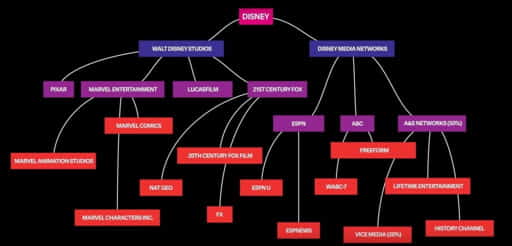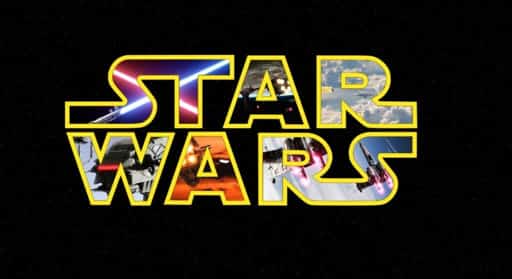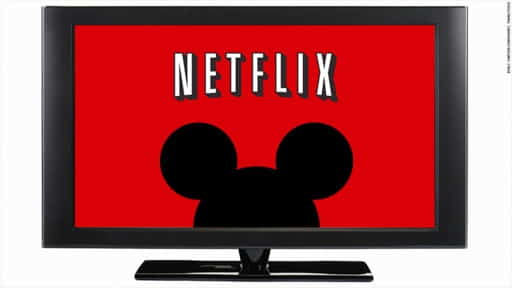We are currently living in a golden age of streaming services. Today, there is an overwhelming number of streaming services like Amazon, Netflix, HBO GO, Hulu to choose from which give us a plethora of movies and TV shows at our fingertips, with new titles coming every day. This may give us many options and surely more options are surely better right? But is it really good for us, the end consumer? Or is it just another source of income for big multi-billion dollar corporations? In either case, it looks like Disney is gearing up to dominate this year., with Disney+.
Netflix is currently the undisputed king of streaming services, with roughly 137 million subscribers worldwide, 68 million of which are international, in addition to having subscribers from over 190 countries. The thing to be noticed though is that the graphs still show a steep upward slope, especially on the international side of things.
And Netflix is leaving no stones unturned to maintain that.
The streaming giant has invested $1.3B in technology this year alone according to a recent interview with founder and CEO Reed Hastings. Not only that Netflix has spent $8B on content production and licensing this year, with the goal of achieving 1,000 original releases in 2018. So it should surprise no that Netflix has been nominated for a record 112 Emmy Awards this year, breaking HBO’s 17-year streak at the top. Netflix continues to expand its streaming base. All of this might have paid off quite well as, for their latest fiscal quarter ending March 31 of this year, Netflix reported a revenue increase of 40% to $3.7B. With such numbers to boast it continues to dominate the home market.
Not only that Netflix is investing a lot in new international markets which have a lot of potential such as India. Netflix India has currently one of the most extensive Netflix libraries in the world. In just around three years it has grown over five-fold, from 826 titles to over 4,800 titles. It is also looking to add more localized content. Netflix has reportedly allocated up to Rs.600 crore ($88 million) per year for original content in India. Earlier this year, it released its first made-in-India original movie, Love Per Square Foot, followed by Lust Stories, the very popular Saif Ali Khan starrer Sacred Games and Selection Day, based on Aravind Adiga’s novel White Tiger. However, the company has not had a smooth ride in the country so far. In terms of market share, Netflix ranks below local players Hotstar and Voot, and American rival Amazon.

However, all of the current landscape might soon change as Disney is soon planning to release its own streaming service- Disney+, and even though it is quite late to join the party I do not think such a minor inconvenience hold back Disney. It is using its massive content library to build up a streaming service from the ground up. The company announced way back in August 2017 it would pull all its movies from Netflix in 2019, and start its own streaming offering for its past titles. Disney’s new streaming service will be called Disney+ and launch in late 2019. And the company has no shortage of titles to choose from as it includes stories ranging from Disney Classics, Pixar Animation, Marvel and Star Wars along with a host of international as well as locally created content.

If Disney plans to bring its entire library then it’s going to prove quite difficult for the competitors. With content available for the entire family with just a single subscription, it will probably be quite a good deal for the end-consumer. Disney revealed the names of other TV series that are going to be available on the streaming service, derived from Disney properties. Popular Disney classics like The Jungle Book, The Lion King and all-time hits like the tales of Disney princesses like Cinderella, Snow White and Sleeping Beauty which can be enjoyed by both children and adults alike.
For fans who enjoy larger than life action, there’s Marvel’s mightiest Super Heroes who bring in their superpowers with movies from the MCU, along with animated series like Marvel’s Guardians of the Galaxy, Marvel’s Avengers Assemble and more. It will also bring along with it countless movies that have been nominated for Academy Awards over the last 90 years. With the acquisition of Lucas films in 2012, the best films from the Star Wars Universe such as The Empire Strikes Back and Return of the Jedi are also going to be available for fans of the Galaxy Far Far Away. Disney also purchased Fox for $71.3 billion in cash and stock, further bolstering its library

Image courtesy -The Verge
And Disney’s strategy for success is quite simple. They use nostalgia to establish and maintain customer loyalty, after all, they have been making an emotional imprint on people’s lives since it was first founded in 1923. To harness these emotions as a marketing technique, Disney has mastered the use of nostalgia by reviving old classics like The Jungle Book, The Beauty & Beast, and Cinderella. Another example of nostalgia is The Lion King remake, which features the same story, songs, and characters as the original. Making the trailer so similar establishes a strong sense of nostalgia among current parents, thereby enticing them to take their own children to the movie, and in turn making a new generation of faithful customers.
But nostalgia is not the only strategy they use. One way Disney keeps its fans engaged is by strategically creating content for different audience segments. For example, Disney’s Star Wars revival effectively drew in both millennials and older generations who enjoyed the original Star Wars. Alternatively, the hit movie Frozen targeted a much younger generation that wouldn’t necessarily be interested in Star Wars.

Star Wars
Disney is not just banking on marketing strategies and its brand name to make it’s streaming service a success. CEO Bob Iger announced that Lucasfilm is developing a second Star Wars live-action series for Disney+ focused on the adventures of Rebel spy Cassian Andor in the first years of the Rebellion, prior to the Rogue One story. The same Diego Luna, who played the character in the movie, will play Andor in the series. The other Star Wars series is, of course, The Mandalorian, which has Jon Favreau at the helm. The exec also revealed that a live-action series about Loki is in the works, with Tom Hiddleston starring as the Marvel villain. We’re also getting a Falcon/Winter Soldier team up series, along with a Scarlet Witch/Vision series.
Disney is quite good at making money when distribution methods change. They’ve done it again and again in the past. When VHS and DVDs became popular Disney pioneered a system called the system called Disney vault where movies would be locked away for years and only available for lucrative limited run sales. Cable expanded the playing field even more. Initially, they licensed their content to HBO but soon they realized the real money was in running their own channel, so Disney channel was born. Last year Disney made 40% of its money from cable channels including the ABC network and ESPN and as chord cutters move away from cable towards services like Netflix, Disney’s trying to pull the same trick with streaming services.

Now here lies the problem for Netflix. Most of the content on Netflix which people actually watch (which according to a study is around 80%) is licenced content from studios. Thus it is a big part of their business. This market is also important for studios because this is where viewers are. However, the situation is not going remain the same, as Disney has already announced it would pull all its movies from Netflix in 2019, and Disney’s not the only one trying to do that. Comcast has Xfinity streaming service, Time Warner has HBO Go and CBS has CBS All Access. This means less and less third-party content to licence. If you see a lot more Netflix originals lately, that’s why. Even if you don’t find Star Wars or Iron Man on Netflix, studio execs hope you’ll stick around for Stranger Things or Bojack Horseman, just like you stuck with HBO for GOT.
Netflix is surely trying it’s best, and Netflix’s newest Black Mirror experiment, Bandersnatch, certainly proves that. The ambitious movie wants to change the way we watch TV and introduces an entirely new way to experience entertainment. Netflix is literally built on the foundation of these innovations to the way we experience entertainment. But is it enough to stick to a single service and miss out on the next wave of Star Wars Movies? Or Will the end-consumer like us will have no other option but to subscribe to multiple services just to follow all the movies and TV shows, which is certainly the costlier option? Whatever it will be, the competition between the streaming services can inspire a new wave of a golden age of TV shows, or everyone could fall back on old tricks and familiar franchises. It will be certainly very interesting to see where this fight among Streaming services will take us in 2019.
Read More:



